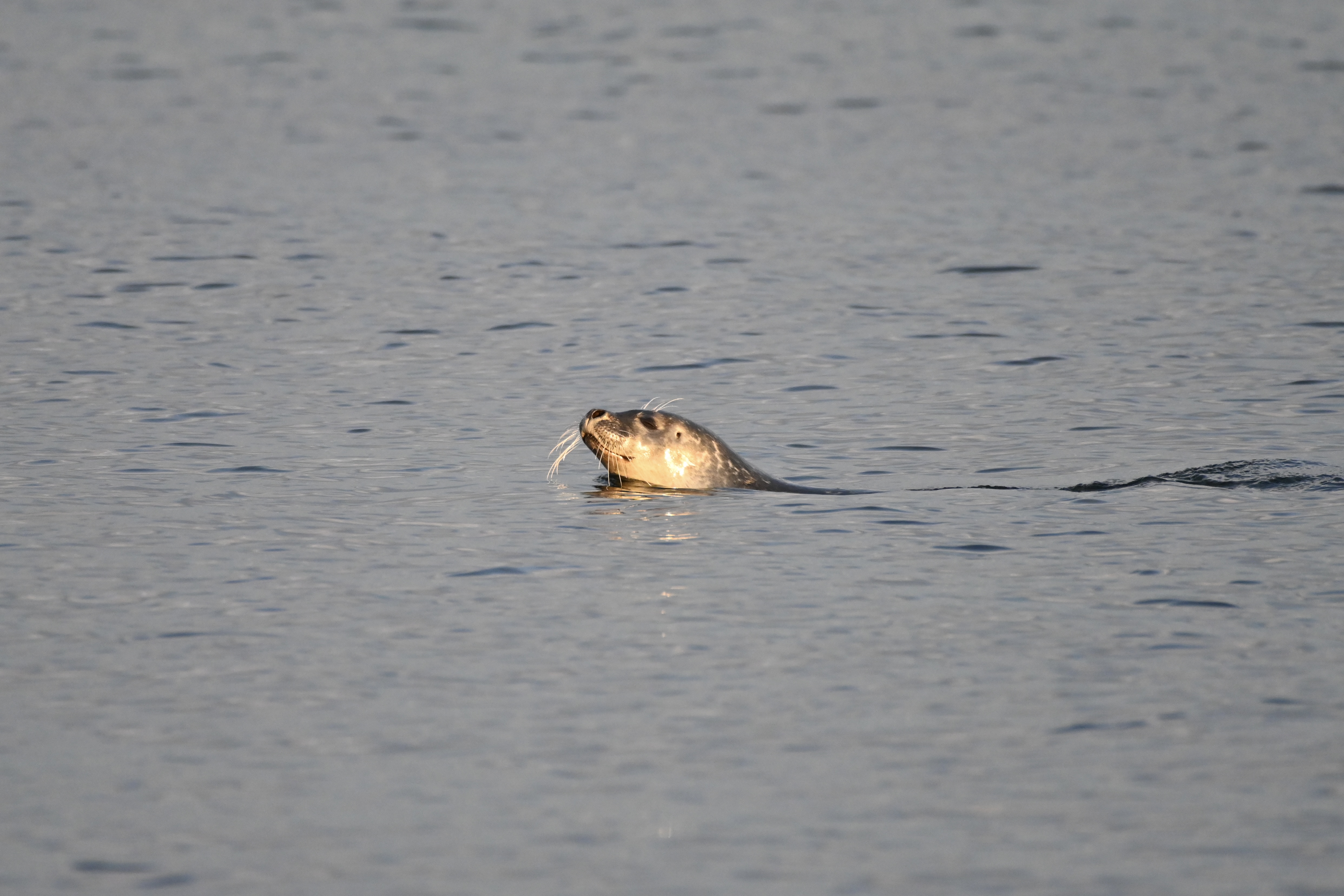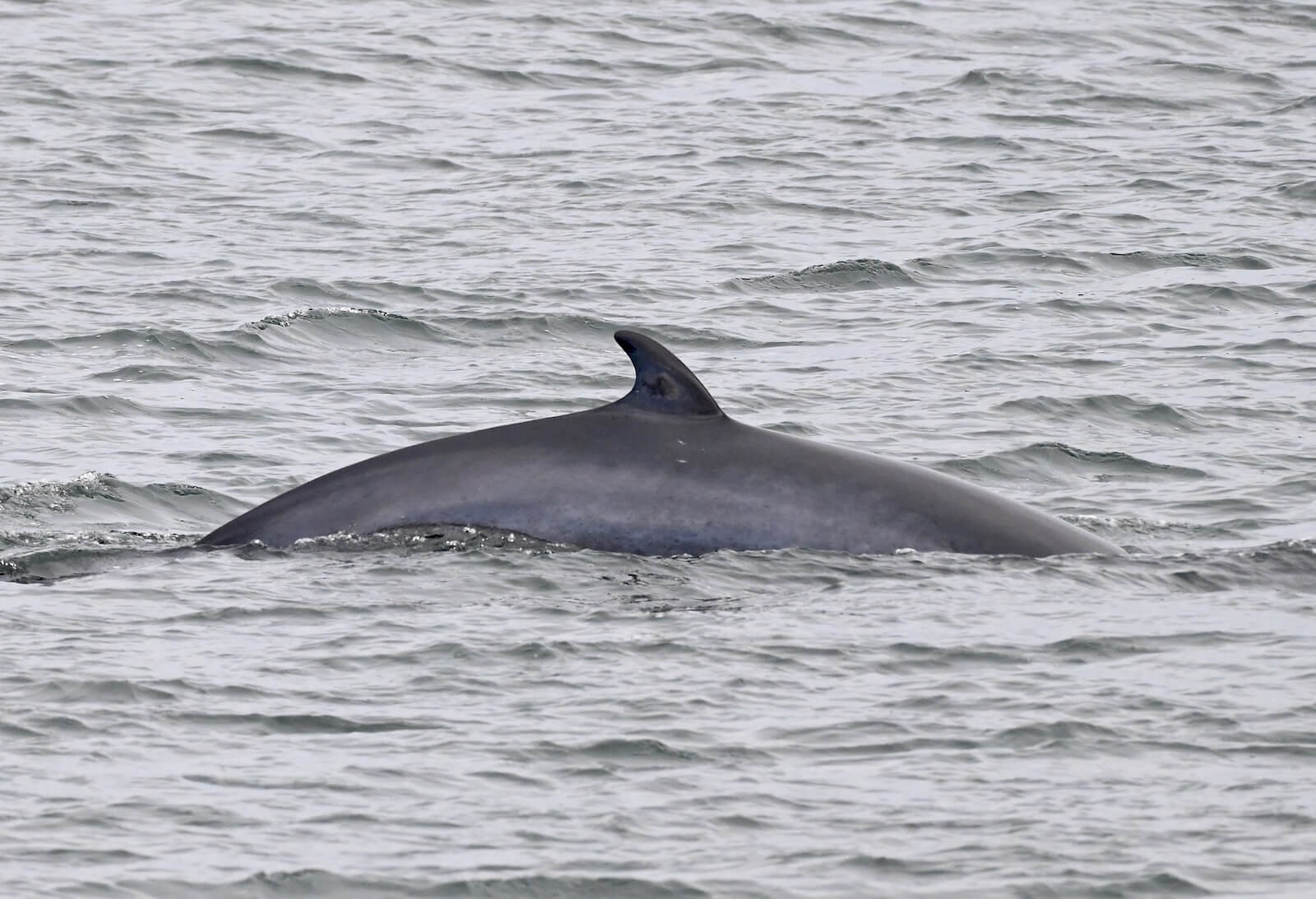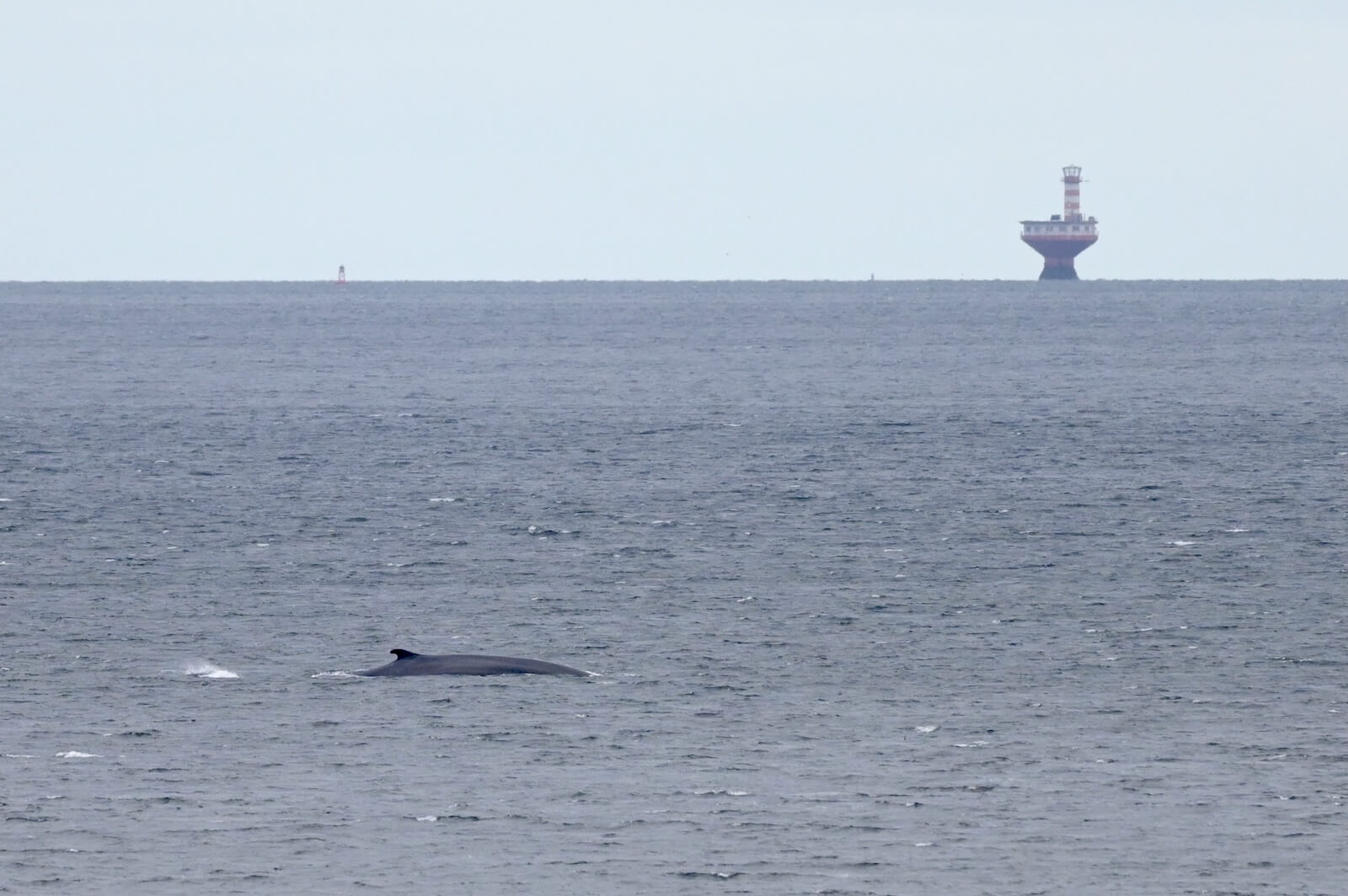While the St. Lawrence continues to be covered in a blanket of beautiful sea smoke, cetaceans and pinnipeds seem to be becoming increasingly discreet. Nevertheless, a few large spouts were reported on the horizon in the Gaspésie and near Franquelin, and a minke whale apparently passed through Tadoussac.
Back on shore
In the Côte-Nord region, it’s the birds that have been stealing the show near the coast, especially the willow ptarmigans (article in French) that have been present for the past few weeks. The director of the Marine Mammal Interpretation Centre (CIMM) was even treated to the presence of these white grouse in the Jardin de la Grève adjacent to the CIMM. But that’s not all, as a cetacean is also said to have passed by over the weekend: “Minke whale at the mouth!” Observed for about ten minutes and then I didn’t see it again…” Even though the museum is closed for the off-season, it seems that it still receives the occasional winter visitor!
For those who live near the St. Lawrence, no need to brave the extreme cold to see whales. A resident of Percé shares a nice observation: “On the afternoon of January 22, right in front of my house, two humpback whales not too far away and an amazing display.”
In Cap-aux-Os, a local also clearly saw a large spout from her own home. “It was on the other side of the bay, meaning it was too far to be 100% certain, but to see it so well despite the distance and the wind and given the observations of the past few days, it was probably another blue whale.”
Humpback in the Dominican Republic
A humpback whale that was observed in the St. Lawrence Estuary in 2021 and 2022 was recently identified in the Dominican Republic. The animal was photographed from the town of Samana on January 14. Photo-identification is a research method that has been used since the 1930s on a wide variety of species, from elephants to gorillas, seals, giraffes and cheetahs. In humpbacks, it is the colour of the caudal fin that is used to recognize individuals. Although it is well known that the species migrates thousands of kilometres to reach its calving grounds, it is always impressive to realize that the individuals we know from the St. Lawrence end up on the other side of the ocean!
Thanks to all our collaborators!
Special thanks go out to all our observers who share their love for marine mammals with us! Your encounters with cetaceans and pinnipeds are always a pleasure to read and discover.
On the water or from shore, it is your eyes that give life to this column.
Régis Bujold
Odélie Brouillette
Patrice Corbeil
Diane Ostiguy
Sandrine Papias
Renaud Pintiaux
Pascal Pitre
Andréanne Sylvain
Marielle Vanasse
And to all the others!
Additionally, we would like to acknowledge the following teams that also share their sightings:
Sept-Îles Research and Education Centre (CERSI)
Group for Research and Education on Marine Mammals (GREMM)
Marine Mammal Observation Network (MMON)
Quebec Marine Mammal Emergency Response Network (QMMERN)
Mingan Island Cetacean Study (MICS)
Would you also like to share your observations?
Have you seen any marine mammals in the St. Lawrence? Whether it’s a spout offshore or just a couple of seals, drop us a line and send your photos to [email protected]!






